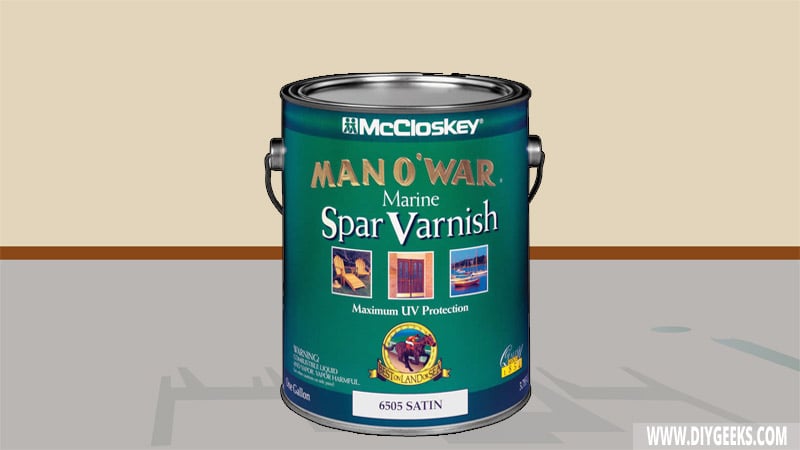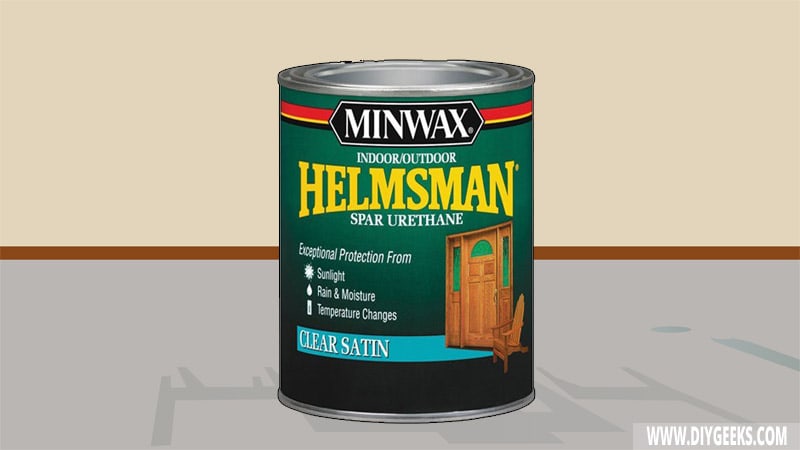Spar varnish and urethane are both protective coatings used for exterior surfaces, especially in marine applications. Both sealers offer impressive moisture resistance and a durable coating that protects surfaces from moisture, water, scratches, and weather elements.
Spar urethane has a more flexible coating, retains its clear finish longer, is easier to apply, and dries faster than spar varnish.
What is Spar Varnish?

Spar varnish is a traditional protective coating used for exterior surfaces, especially over marine surfaces. It creates a hard (rigid) moisture-resistant coating that protects surfaces from water penetration.
Spar varnish was originally designed for the “spars” or poles of seal vessels. It was used to coat poles, bars, and spars to offer protection from water, scratches, and UV deterioration which is why it’s called “spar” varnish.
Today, spar varnish is no longer restricted to boats and ships as homeowners now use the finish on their exterior wood surfaces to protect them from UV rays, dents, and water damage.
Spar varnish creates a clear or amber-like finish that can yellow over time. Its hard (rigid) finish isn’t as flexible and can crack if exposed to temperature changes.
What is Spar Urethane?

Spar urethane is a protective coating applied over exterior surfaces, usually in marine applications. It creates a flexible moisture-resistant coating that protects surfaces from outdoor weather elements.
Since spar urethane is flexible, its finish can contact and expand based on temperature changes. It creates a clear finish that doesn’t yellow over time.
Spar Varnish vs Spar Urethane
The differences between spar varnish and spar urethane are listed below.
The Formula
Spar varnish formula consists of alkyd resins, Tung oil or Linseed oil, drying agents, solvents, and flexibility enhancers. Spar urethane formula consists of urethane resins, solvents, drying agents, flexibility enhancers, and polyurethane resins.
The formula of both sealers depends on the brand and manufacture
Wood Protection
Spar varnish and spar urethane both offer good wood protection and a durable finish.
However, the spar urethane finish is more flexible and withstands temperature changes by contracting and expanding. Spar varnish finish isn’t flexible and can develop cracks if exposed to temperature changes.
Water Resistance
Spar varnish and spar urethane both offer impressive water resistance and prevent high water amount penetration. The choice between the two should be based on whether the surface is affected by temperature changes and the ease of application.
Interior or Exterior Surfaces
You can use spar varnish and urethane over interior and exterior surfaces as they are durable and hard enough to withstand outdoor weather elements.
Applicator Method
Spar urethane is easier to apply than spar varnish as it’s more flexible and has a faster dry time, allowing you to apply multiple coats faster.
Spar varnish is harder to apply as it can leave brush marks behind and has a longer dry time.


